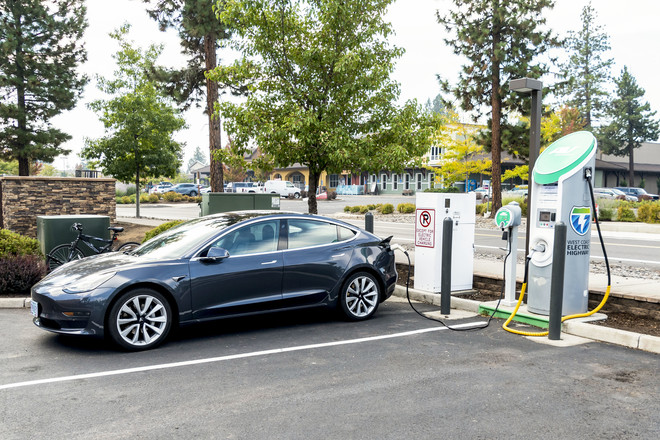How will ODOT spend $52 million for electric vehicle charging from the federal infrastructure bill?
 Oregon’s electric vehicle charging infrastructure is about to get supercharged!
The state is set to receive $52 million of additional funding over the next five years for EV charging infrastructure. The money is part of the $1.2 billion in additional transportation funding from the recently passed federal infrastructure package.
The federal government makes the initial decisions on how that $52 million can be spent. ODOT should receive the first set of federal guidelines in February 2022.
Suzanne Carlson, ODOT Climate Office director, says they expect the federal guidelines will steer the funding to Alternative Fuel Corridors, which are national highways that are eligible for federal grant funding to add public EV charging and other alternative fuel infrastructure. The program is overseen by the Federal Highway Administration.
Oregon has seven corridors designated under the program: Intestates 5, 84 and 82, and U.S. 26, 101, 20 and 97.
Prepared for future charging needs
According to ODOT data, Oregonians are adopting EV’s at a swift rate. New EV registrations in 2021 are on track to increase by about 70 percent compared to 2020.
It’s a similar story with electric bicycles: the New York Times reported national e-bike sales jumped 145 percent from 2019 to 2020.
That increased adoption rate coincides with results from the future public EV charging needs study we completed earlier this year (TEINA). The study looked at Oregon's immediate (and future) need for more public chargers to match EV adoption rates, and presents a clear roadmap for ODOT and partners to follow to electrify the system for multiple types of vehicles.
ODOT’s role will be to keep up momentum on EV adoption rates via targeted state investments, securing more federal grant funding, and working with private partners to ensure public EV charging is equitable and practical.
Transportation electrification is high on the agency’s list of strategic priority outcomes, and is a key component in state government’s effort to reduce greenhouse gas emissions from transportation.
“Moving quickly to electrify transportation is just one piece of Oregon’s GHG emissions reduction plan,” said Carlson. “Together with other ongoing investments in bike and pedestrian programs, public transit, and climate resiliency, we’ll be able to make strong progress on our work to address climate change in Oregon.”
If you want more information about what else is in store for Oregon from the federal bill, check out our infographic or dedicated webpage.
Send questions or comments about our work to Climate.Office@odot.state.or.us.
-ODOT Climate Office
|